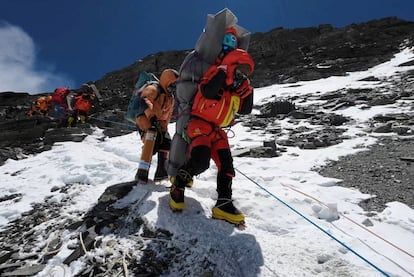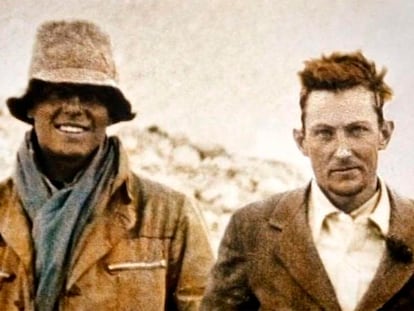Mount Everest’s deadliest spring
The 17 deaths this season – a tragic record – act as a warning about overcrowding on the world’s highest mountain

Everest is deserted and silent, except for the gusts of wind that now whip against everything. The helicopters and tents have vanished, as has all the bustle that accompanied them on the mountain just a few weeks ago.
Somewhere on its slopes, however, are the bodies of five mountaineers who disappeared last May, joining the 12 confirmed deaths. This adds up to the highest number of deaths ever recorded in a single season: 17. Witnesses reported a chaotic spring on the southern slope of the coveted Nepalese mountain, marked not only by an exaggerated number of deaths, but by a legion of climbers who succumbed to frostbite or exhaustion. Many begged for a helicopter ride from Everest Camp II, desperate to abandon their broken mountain-climbing dream as soon as possible.
Despite the record number of deaths this past season, they will likely never reach as high a profile as the 15 corpses that were scattered on Everest in 1996. That year saw a great drama unfold on the mountain, which was reported on by American writer and mountaineer Jon Krakauer in his bestselling memoir, Into Thin Air.
The earthquake that shook Nepal in 2015 left between 19 and 24 dead at the Everest base camp, which was devastated by a huge avalanche. Not only did climbers lose their lives, but so did camp workers, who don’t count as having been “killed in action.” Hence, the official death record belongs to 2023. Back in 2014, another avalanche took the lives of 16 Sherpas, while they were equipping the Khumbu Icefall for climbers.
In 1996, flawed decision-making by two Western guide companies explained the heavy death toll. In 2023, the explanation also has to do with the commercialization of the mountain. But the government of Nepal prefers to blame more vague scenarios, while also pointing the finger at climate change.
While it’s true that this spring has been colder than usual in recent years and that there have been a greater number of frostbite cases than in the recent past, none of the 12 deceased (whose remains have been found) froze to death. Apart from the three Sherpas who disappeared buried by the breakage of a serac (an unstable ice mass) while they were equipping the lower part of the route, the other nine deaths are explained by exposure to extreme altitude and the unpredictable consequences that these heights can have on organs. None died while queuing up to step on the peak.
This spring, 48 companies that provide logistics and guides claimed to have had 478 clients. Most of these agencies are from Nepal — some are labeled as being “low-cost.” There is a substantial difference between a guide company and one that simply offers services on the mountain and places non-guide Sherpas along the route. Those who pay to have a guide by their side are paying to delegate decision-making duties, while also securing a guarantee that they will never be abandoned to their fate. And that’s expensive. There are even clients who travel with two or three Sherpas escorting them at every minute.
Being a Sherpa doesn’t mean being a guide: very few guides in Nepal have the international credential. Recent accounts reveal cases of Sherpa workers abandoning their clients when they are no longer autonomous. Western guide companies focus on the safety of their clients — especially in the aftermath of the 1996 tragedy — although many cheap agencies don’t feel that the commitment to their clients goes beyond their obligation to provide certain logistical services on the mountains.
This is a cultural as well as an economic question. A good guide anticipates the extreme fatigue of his client and forces them to give up before it’s too late. He also makes sure that he never lacks bottled oxygen — a commodity that’s expensive on Everest. Not all agencies can afford it in abundance. In fact, in recent years, there have been reports of the theft of oxygen bottles stored in the high-altitude areas of the mountain. Additionally, a good guide doesn’t allow his client to get lost… something that partly explains why five mountaineers have disappeared this season. Finally, Western agencies require a mountaineering CV from their clients, while low-cost agencies claim that no prior training or experience is required.
Another serious problem that fuels these tragedies has to do with the motivations of clients. Some are much more interested in getting the prized photo at the peak of Everest, rather than assuming that the mountain should be a milestone — and not a start — in their climbing careers.
Sign up for our weekly newsletter to get more English-language news coverage from EL PAÍS USA Edition








































